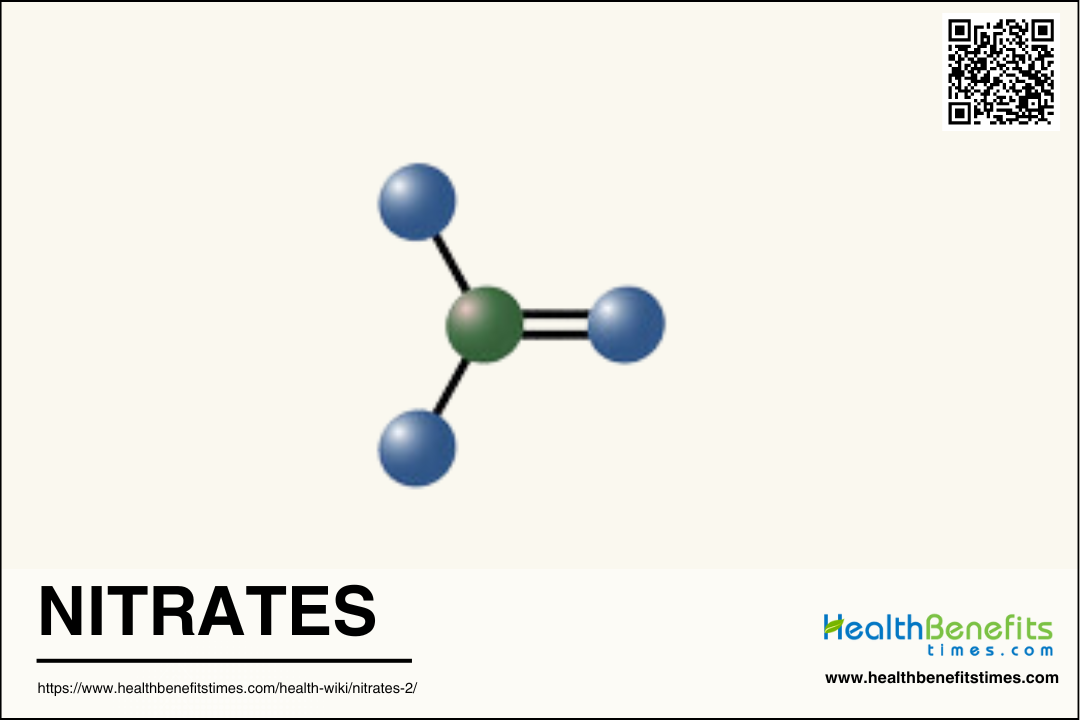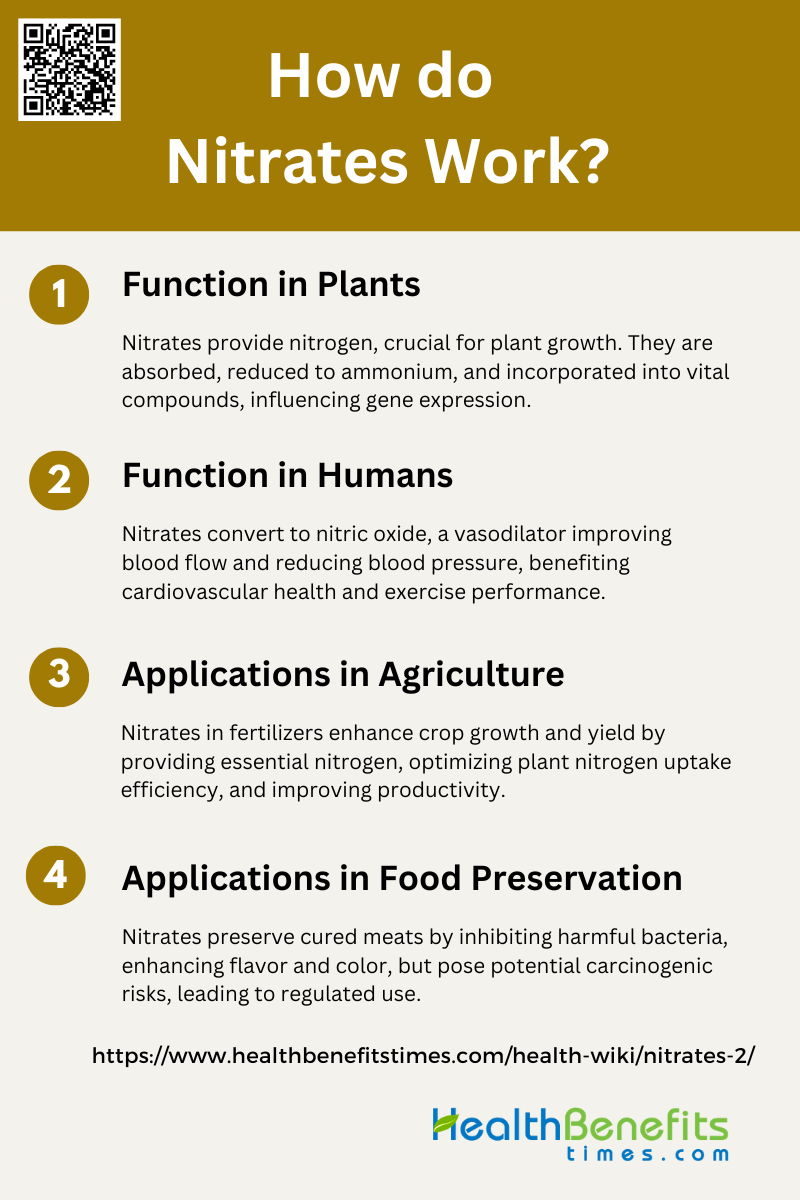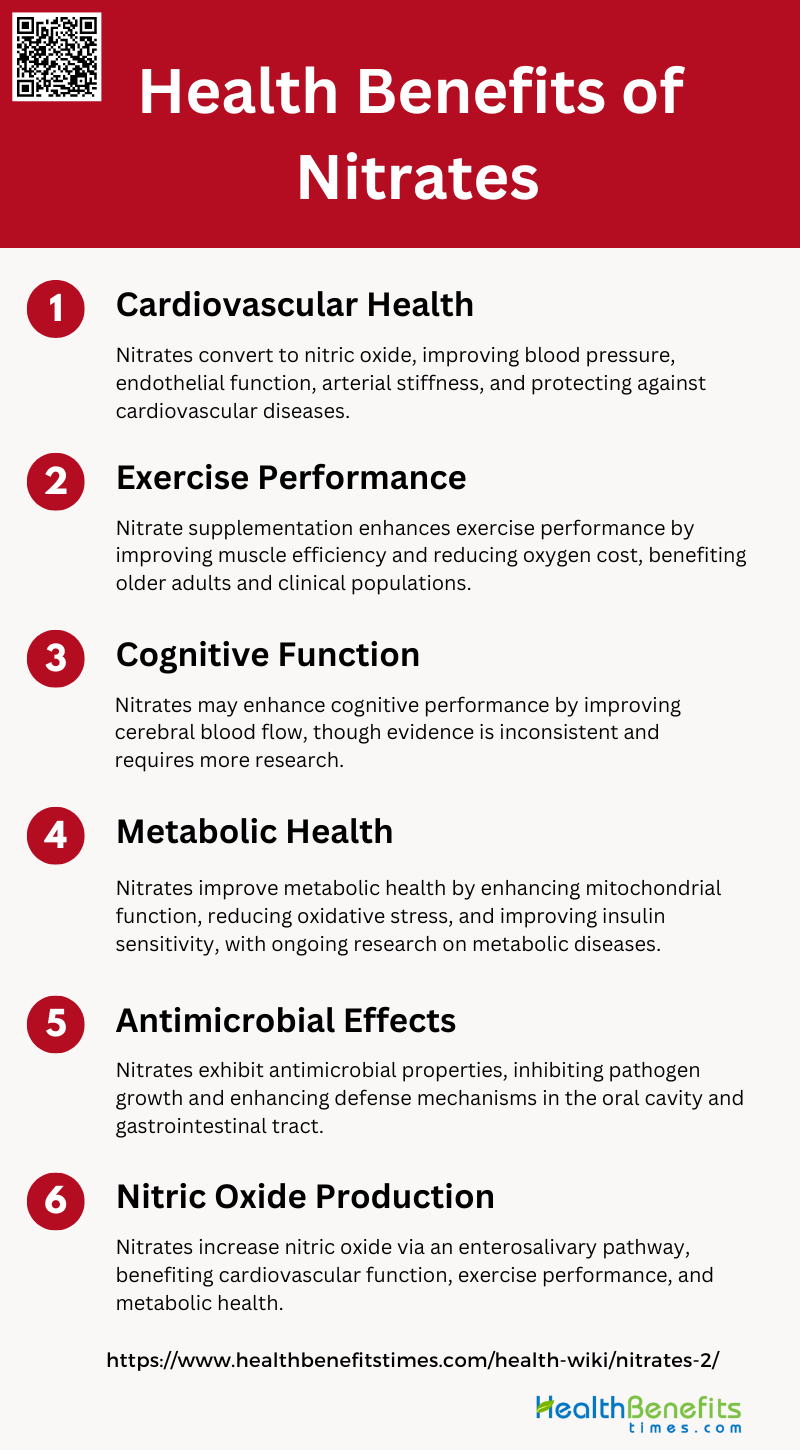Nitrates are inorganic compounds composed of nitrogen and oxygen atoms, with the chemical formula NO3-. They are naturally occurring ions that form when nitrogen from the atmosphere or soil combines with oxygen. Nitrates play a crucial role in the nitrogen cycle and are essential nutrients for plant growth, which is why they are commonly used in fertilizers. However, excessive levels of nitrates in water can pose environmental and health risks. In drinking water, high nitrate concentrations can be particularly dangerous for infants, potentially causing methemoglobinemia (blue baby syndrome). Nitrates can enter water sources through agricultural runoff, sewage discharge, and natural processes. While nitrates are important for agriculture and ecosystem functioning, their levels in water and soil are closely monitored to prevent pollution and maintain environmental and human health.
Chemical composition and structure
The chemical composition and structure of materials are intricately linked, influencing their properties and applications. Minerals, for instance, exhibit complex chemical compositions and crystal structures that are crucial for understanding their stability and evolution. Recent studies have updated the database of structural and chemical complexity parameters, revealing that the most complex minerals are characterized by large clusters and high hydration states. In the realm of chemical imaging, advancements in techniques such as vibrational and mass-spectrometric imaging have enhanced our ability to determine chemical structures with high spatial resolution, although data fusion remains a challenge. Additionally, the chemical compositions of planetary systems are shaped by processes in planet-forming disks, which are influenced by both inherited molecules and in situ chemical reactions. Understanding the relationship between chemical composition and structure is also vital in materials science, as seen in the study of boroaluminosilicate glasses, where changes in composition lead to significant variations in physical properties. These insights underscore the importance of chemical composition and structure in various scientific fields.
Common sources of nitrates
They are compounds that naturally occur in the environment and are also produced through various human activities. They play a significant role in the nitrogen cycle and are essential for plant growth. However, excessive nitrates can lead to environmental and health issues. Here are some common sources of nitrates, both natural and artificial:
1. Natural Sources
Vegetables such as spinach, beets, celery, and lettuce are known to contain high concentrations of nitrates, making them primary sources in the human diet. These nitrates are absorbed by plants from the soil and water, which naturally contain these compounds. Additionally, the photolysis of nitric acid and nitrate on natural surfaces, such as plant leaves, contributes to the presence of nitrates in the environment. The consumption of these nitrate-rich vegetables is not only common but also beneficial, as they contribute to cardiovascular health by facilitating nitric oxide production.
2. Artificial Sources
Artificial sources of nitrates primarily come from their use as food additives in processed meats. Nitrate and nitrite salts are added to meat products to improve quality, safety, and shelf life by inhibiting microbial growth and oxidation. These synthetic additives are often labeled with E-numbers and are used extensively in the meat industry to develop cured color and flavor. However, there is growing concern about the potential health risks associated with these additives, such as the formation of carcinogenic nitrosamines. This has led to increased consumer demand for natural alternatives, such as vegetable extracts, to replace synthetic nitrates and nitrites in food products.
How Do Nitrates Work?
Nitrates play a crucial role in both plant and human physiology, as well as in various industrial applications. Understanding their functions and applications can provide insights into their importance in agriculture, food preservation, and health. Below, we explore the roles of nitrates in different contexts:
1. Function in Plants
Nitrates play a crucial role in plant physiology, primarily serving as a vital source of nitrogen, which is essential for plant growth and development. They are absorbed by plant roots from the soil and are subsequently reduced to ammonium, which is then incorporated into amino acids, proteins, and other nitrogen-containing compounds. This process is part of the Primary Nitrate Response (PNR), a complex signaling pathway that affects gene expression and helps plants adapt to changing nutritional environments. For instance, in Arabidopsis thaliana, nitrate provision can influence up to a tenth of the genome’s expression, highlighting its significant impact on plant metabolism and growth.
2. Function in Humans
In humans, nitrates are primarily known for their role in the cardiovascular system. They are converted into nitric oxide (NO), a potent vasodilator that helps in relaxing blood vessels, thereby improving blood flow and reducing blood pressure. This mechanism is particularly beneficial in treating conditions like angina and heart failure. Additionally, dietary nitrates, commonly found in vegetables, have been linked to various health benefits, including improved exercise performance and reduced risk of chronic diseases. However, excessive nitrate intake can lead to adverse health effects, such as methemoglobinemia, especially in infants.
3. Applications in Agriculture
They provide an essential source of nitrogen, which is crucial for plant growth and crop yield. The application of nitrate-based fertilizers can significantly enhance the productivity of various crops by improving their nitrogen uptake efficiency. However, the timing, rate, and form of nitrate application are critical factors that influence nitrate accumulation in plant tissues and the overall effectiveness of fertilization. Additionally, the use of plant biostimulants and the management of environmental conditions during plant growth can further optimize nitrate utilization in agriculture.
4. Applications in Food Preservation
They inhibit the growth of harmful bacteria, such as Clostridium botulinum, thereby preventing foodborne illnesses. Nitrates are converted to nitrites in the food, which then react with amines to form nitrosamines, compounds that contribute to the characteristic flavor and color of cured meats. However, there are concerns regarding the potential health risks associated with nitrosamines, which are considered carcinogenic. Therefore, the use of nitrates in food preservation is regulated to ensure safety while maintaining their preservative efficacy.
Health Benefits of Nitrates
Nitrates, naturally found in various foods, play a significant role in promoting health and wellness. They are known for their beneficial effects on cardiovascular health, exercise performance, and overall bodily functions. Below, we delve into the specific health benefits of nitrates:
1. Cardiovascular Health
Dietary nitrates have been shown to significantly benefit cardiovascular health through various mechanisms. Nitrates are converted to nitric oxide (NO) in the body, which plays a crucial role in vascular function. Studies have demonstrated that nitrate supplementation can lower blood pressure, improve endothelial function, and reduce arterial stiffness. Additionally, nitrates have been found to inhibit platelet aggregation and protect against ischemia-reperfusion injuries. These effects are particularly beneficial in populations at risk of cardiovascular diseases, although more research is needed to understand the long-term impacts.
2. Exercise Performance
Nitrate supplementation has been shown to enhance exercise performance by improving muscle efficiency and reducing the oxygen cost of exercise. This is primarily due to the increased bioavailability of NO, which enhances blood flow and mitochondrial efficiency. Studies have reported improvements in time to exhaustion and overall exercise tolerance, particularly in older adults and clinical populations with cardiovascular diseases. However, the benefits in healthy, recreational athletes are less clear, likely due to variability in study designs and participant fitness levels.
3. Cognitive Function
The effects of dietary nitrates on cognitive function are mixed. Some studies suggest that increased NO availability from nitrate supplementation can improve cerebral blood flow, potentially enhancing cognitive performance. However, the evidence is not consistent, with some studies showing no significant cognitive benefits. The variability in findings may be due to differences in study populations, dosages, and cognitive assessment methods. More research is needed to clarify the potential cognitive benefits of dietary nitrates, particularly in older adults and those with cognitive impairments.
4. Metabolic Health
Dietary nitrates have shown promise in improving metabolic health by enhancing mitochondrial function and reducing oxidative stress. These effects can lead to improved insulin sensitivity and reversal of metabolic syndrome. However, the evidence is still emerging, and some studies have found no significant metabolic benefits from nitrate supplementation. The potential for nitrates to act as a therapeutic intervention for metabolic diseases like type-2 diabetes is an exciting area of ongoing research.
5. Antimicrobial Effects
These compounds can inhibit the growth of various pathogens, contributing to the body’s defense mechanisms. The role of the oral microbiome in converting dietary nitrates to Nitric Oxide is particularly important, as it enhances the antimicrobial effects in the oral cavity and gastrointestinal tract. This antimicrobial activity adds another layer of health benefits associated with dietary nitrate consumption.
6. Nitric Oxide Production
The production of NO from dietary nitrates involves a complex enterosalivary pathway, where oral bacteria play a crucial role in reducing nitrates to nitrites, which are then further reduced to NO in the body. This alternative pathway complements the classical L-arginine-NO synthase pathway, especially under conditions of low oxygen availability. The enhanced NO production from dietary nitrates has been linked to various health benefits, including improved cardiovascular function, exercise performance, and metabolic health.
Risks Associated with Nitrates
Nitrates, while beneficial in certain contexts, can pose significant risks to both human health and the environment when present in excessive amounts. Understanding these risks is crucial for managing their impact and ensuring safety. Below, we explore the primary health and environmental risks associated with nitrates:
1. Health Risk
Excessive intake of nitrates can pose health risks, particularly when they convert to nitrites and then to nitrosamines, which are potentially carcinogenic. High levels of nitrates in drinking water can lead to methemoglobinemia, or ‘blue baby syndrome,’ in infants. Additionally, long-term exposure to high nitrate levels may contribute to various health issues, including certain cancers and thyroid problems. Below are list of Health Risk Associated with Nitrates:
- Methemoglobinemia: Methemoglobinemia, also known as “blue baby syndrome,” is a condition where nitrate ingestion leads to the conversion of hemoglobin to methemoglobin, which reduces the blood’s oxygen-carrying capacity. This condition is particularly dangerous for infants, as their bodies are more susceptible to the effects of nitrate contamination in drinking water.
- Cancer Risk: Nitrate ingestion has been linked to an increased risk of various cancers, including colorectal, bladder, and thyroid cancers. The conversion of nitrate to nitrite and subsequent formation of N-nitroso compounds, which are known carcinogens, is a key mechanism behind this risk. Studies have shown significant associations between nitrate exposure and increased cancer risk, even at levels below regulatory limits.
- Cardiovascular Issues: Exposure to high levels of nitrates and nitrogen oxides has been associated with cardiovascular problems, including myocardial infarction. The formation of N-nitroso compounds and their potential to cause oxidative stress and inflammation are believed to contribute to these adverse cardiovascular outcomes.
- Pregnancy Complications: Maternal exposure to high nitrate levels in drinking water has been linked to adverse pregnancy outcomes such as very low birth weight, preterm birth, and neural tube defects. These risks are attributed to the potential teratogenic effects of N-nitroso compounds formed from nitrate ingestion.
- Thyroid Disease: Nitrate exposure has been suggested to have anti-thyroid effects, including the inhibition of iodine uptake, which can lead to thyroid disorders. While animal studies have shown significant thyroid changes with high nitrate exposure, human studies have been less conclusive. However, some cohort studies have indicated a potential link between higher nitrite exposure and an increased risk of thyroid cancer.
2. Environmental Risks
Agricultural runoff containing nitrates can lead to eutrophication in water bodies, causing algal blooms that deplete oxygen and harm aquatic life. This process can disrupt ecosystems and reduce biodiversity. Furthermore, nitrates in the soil can leach into groundwater, posing risks to drinking water supplies and contributing to pollution. Below are lists of Environmental Risks Associated with Nitrates:
- Ecosystem Disruption: Nitrate pollution can significantly disrupt ecosystems by promoting excessive algal growth in water bodies, a phenomenon known as eutrophication. This process depletes oxygen levels in the water, leading to the death of aquatic organisms and a decline in biodiversity. The accumulation of nitrates in the environment can also alter the natural nutrient balance, affecting plant and animal species composition and interactions.
- Groundwater Contamination: Nitrates from agricultural activities, such as the use of fertilizers and treated wastewater for irrigation, pose a significant risk to groundwater quality. High nitrate levels in groundwater can lead to serious health risks for humans, including methemoglobinemia or “blue baby syndrome” in infants. Studies have shown that areas with intensive agricultural activities often exhibit elevated nitrate concentrations in groundwater, necessitating urgent measures for pollution control.
- Surface Water Pollution: Surface water bodies are highly susceptible to nitrate pollution, primarily from agricultural runoff and wastewater discharge. Elevated nitrate levels in surface waters can lead to harmful algal blooms, which produce toxins that are detrimental to aquatic life and human health. The persistence of nitrates in surface water can also affect the quality of drinking water sources, requiring advanced treatment processes to ensure safety.
- Soil Degradation: The excessive use of nitrate-based fertilizers can lead to soil degradation by altering its chemical composition and reducing its fertility over time. High nitrate levels can disrupt the soil’s natural microbial communities, affecting nutrient cycling and soil structure. This degradation can result in reduced agricultural productivity and increased vulnerability to erosion and other environmental stresses.
- Air Pollution: Nitrates can contribute to air pollution through the release of nitrogen oxides (NOx) during agricultural activities and industrial processes. These gases can react with other atmospheric compounds to form ground-level ozone and particulate matter, which are harmful to human health and the environment. Additionally, nitrogen oxides play a role in the formation of acid rain, which can further degrade ecosystems and infrastructure.
How to Balance Nitrate Intake
Balancing nitrate intake is essential for maintaining good health and preventing potential adverse effects. This guide provides dietary recommendations, tips for reducing excessive nitrate consumption, and advice on choosing nitrate-rich foods wisely. Follow these steps to ensure a balanced and healthy diet:
1. Dietary Recommendations
To balance nitrate intake, it is essential to incorporate a variety of nitrate-rich vegetables into your diet while being mindful of the overall quantity consumed. Vegetables such as spinach, beetroot, and rocket salad are excellent sources of dietary nitrate and have been shown to increase plasma nitrate and nitrite concentrations, which can lower blood pressure and improve cardiovascular health. However, it is important to avoid excessive consumption, as high levels of nitrate intake can potentially lead to adverse health effects, including an increased risk of certain cancers. A balanced approach, incorporating both high-nitrate and low-nitrate vegetables, can help achieve the cardiovascular benefits without exceeding safe intake levels.
2. Tips for Reducing Excessive Nitrate Consumption
To reduce excessive nitrate consumption, consider diversifying your vegetable intake to include both nitrate-rich and nitrate-poor options. Monitoring portion sizes and avoiding over-reliance on nitrate-rich vegetables like beetroot and spinach can help maintain a balanced intake. Additionally, be cautious with processed meats, which can also be high in nitrates and nitrites, and opt for fresh, whole foods whenever possible. Cooking methods can also influence nitrate levels; for instance, boiling vegetables can reduce their nitrate content. Finally, maintaining a varied diet that includes a wide range of nutrients can help mitigate the potential risks associated with high nitrate consumption.
3. Choosing Nitrate-Rich Foods Wisely
When choosing nitrate-rich foods, prioritize fresh vegetables over processed options to maximize health benefits and minimize potential risks. Green leafy vegetables, such as spinach and rocket salad, and root vegetables like beetroot are excellent choices due to their high nitrate content and associated cardiovascular benefits. It is also beneficial to consider the overall dietary context, such as incorporating these vegetables into a balanced diet that includes other nutrient-rich foods. Be mindful of the potential interactions with other dietary components, such as vitamin C and polyphenols, which can enhance the beneficial effects of nitrates. By selecting a variety of nitrate-rich vegetables and integrating them into a well-rounded diet, you can enjoy their health benefits while minimizing potential risks.




